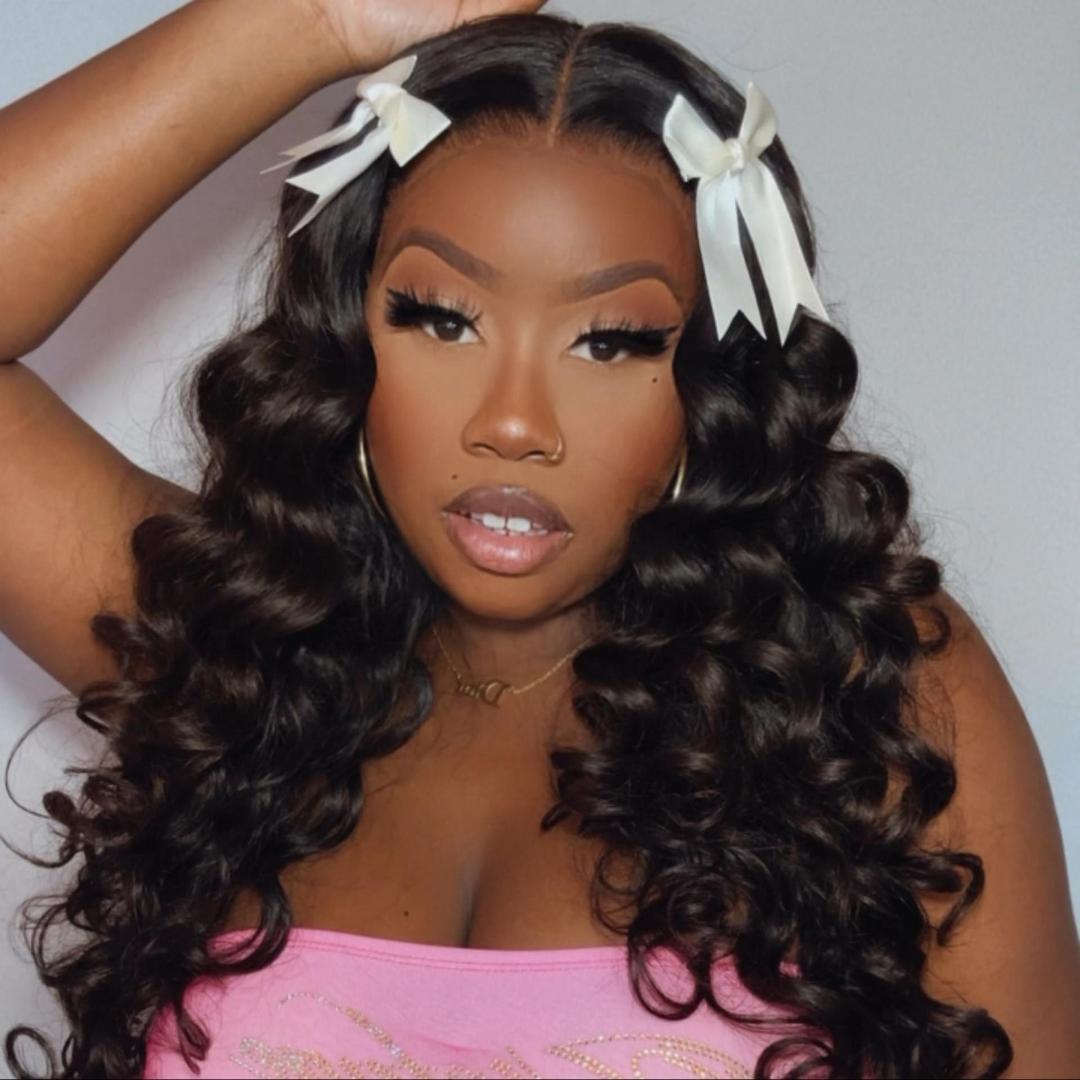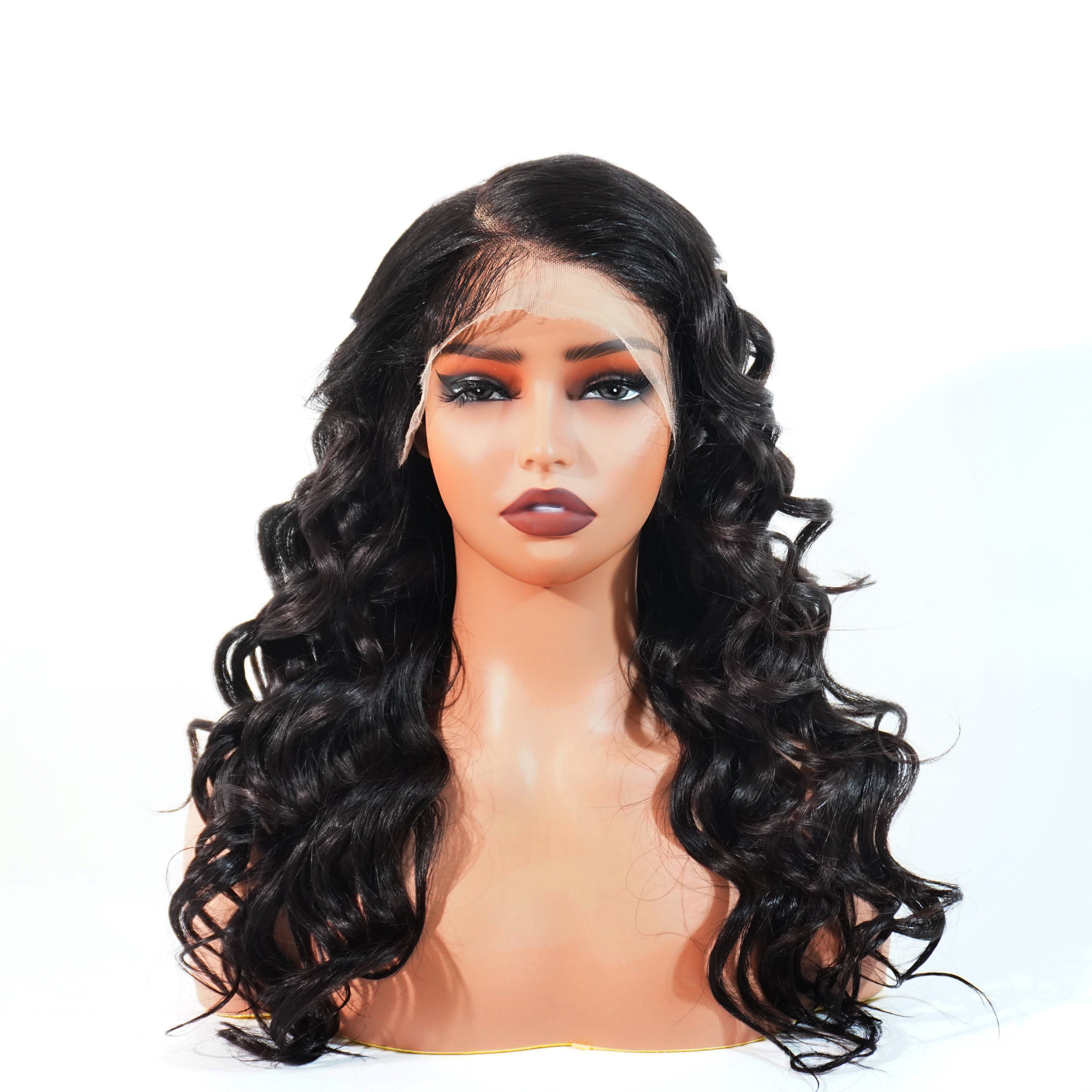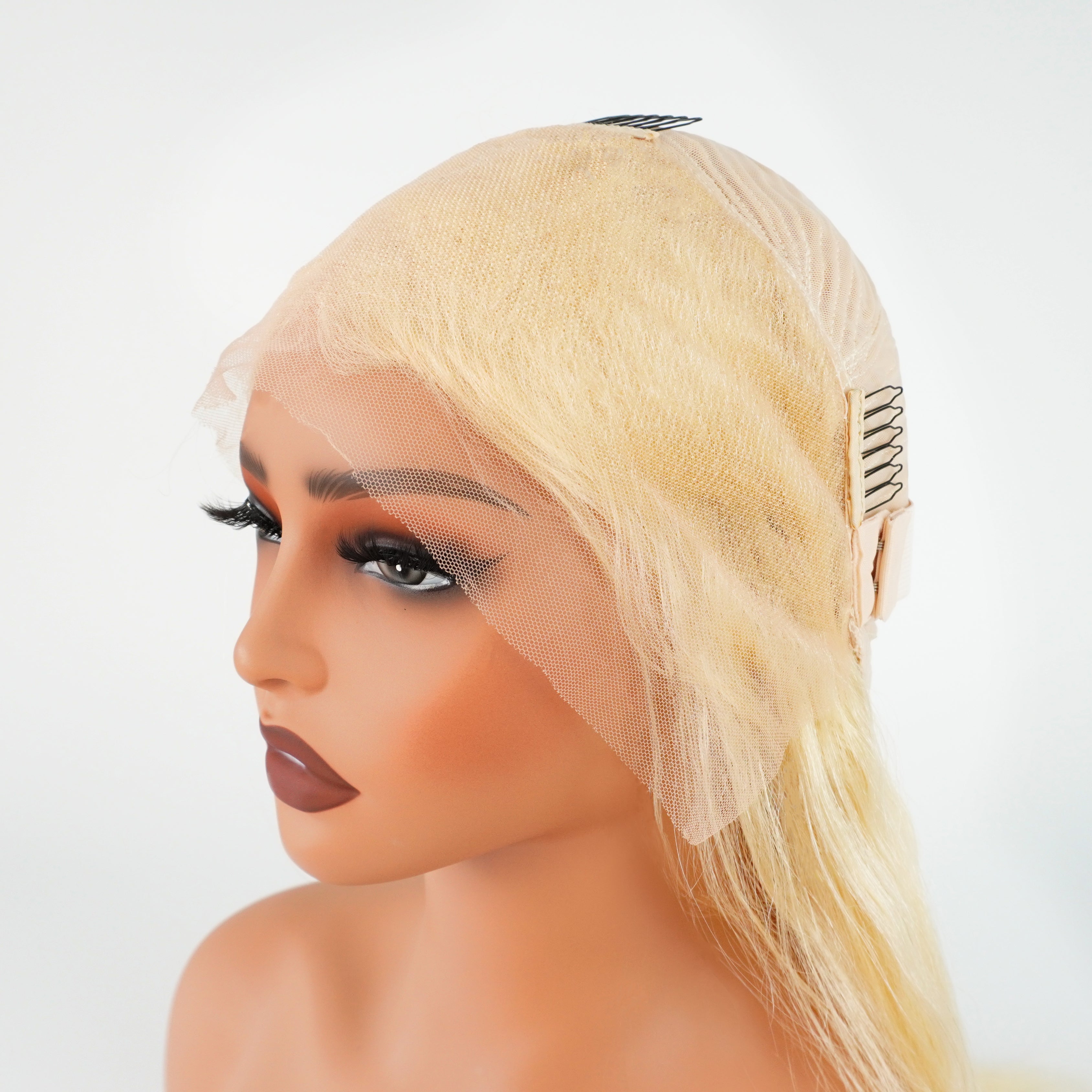How to Workout With a Wig?(Detail Guide)
Hey! I Find the Answer!
Many individuals who wear wigs face a common dilemma when it comes to maintaining an active lifestyle: How can they work out without compromising the integrity of their wig or feeling uncomfortable? This article is here to address the common concerns and challenges you may face when working out with a wig. Whether you're new to wigs or have worn them for years, you'll find tips and solutions to help you feel confident during your workouts.

Can You Wear a Wig While Exercising?
A common question among wig wearers is whether it's possible to wear a wig while exercising. The answer is yes, but there are several factors to consider to ensure you remain comfortable and your wig stays in place.
1. Wig Fit and Security
Exercising generates heat, and sweat can cause your wig to shift. Therefore, a well-fitted wig is essential. Adjustable straps, wig grips, combs, or clips can help keep the wig secure. Some wigs are specifically designed for exercise, offering lightweight and breathable options.
2. Material Matters
The wig's material plays a crucial role in comfort. Synthetic wigs are often heat-resistant and easier to maintain than human hair wigs, which might absorb more sweat. However, synthetic wigs can sometimes feel less breathable, so weigh the pros and cons of each material based on your workout routine.
3. Wig Style
Opt for shorter styles or updos during workouts. Shorter wigs or those that can be tied back are less likely to tangle or become uncomfortable as you exercise.
Can You Wear a Wig While Running?
Running is a high-impact activity that can cause a wig to shift if not properly secured. Here’s how to keep your wig in place while you run:
1. Secure the Wig
Use a wig grip or headband to prevent slipping. Wig grips, in particular, provide a non-slip surface that helps hold your wig in place. If your wig has built-in combs or clips, make sure they are firmly fastened.
2. Choose the Right Cap Construction
The wig's cap construction can impact comfort and security during running. Wigs with monofilament or lace front caps are typically more breathable and provide a natural look. Caps with silicone strips can also help prevent movement during vigorous activity.
3. Moisture Management
Sweat is inevitable during a run, so managing moisture is crucial. Wearing a moisture-wicking cap or scarf under your wig can absorb sweat and protect the wig's interior, prolonging its lifespan.
4. Post-Run Care
After your run, gently remove the wig and let it air out. If necessary, wash the wig according to the manufacturer's instructions, and ensure it's completely dry before wearing it again.
Can You Do Yoga with a Wig?
Yoga, a low-impact exercise focused on flexibility and mindfulness, might seem easier to do while wearing a wig. However, there are still important considerations.
1. Comfort and Flexibility
Yoga involves a lot of movement, including inversions, so your wig needs to be both flexible and secure. A snug but not tight wig cap will move with you rather than against you.
2. Breathing and Heat
Yoga, especially hot yoga, can make you sweat more than usual. Choose a wig made of breathable materials or a lighter wig to reduce heat buildup.
3. Minimalist Styles
Consider minimalist styles for yoga. A short bob or pixie cut is less distracting and easier to manage. If you prefer longer hair, tie it back in a low bun or ponytail.
4. Mindful Movement
Certain poses, like those requiring you to lie on your back, may put pressure on your wig and cause it to shift. Practice these poses gently and adjust your wig as needed.
Can I Go to the Gym in a Wig?
Yes, you can go to the gym in a wig, but preparation is key to ensure a comfortable and enjoyable workout.
1. Preparing Your Wig
Before heading to the gym, secure your wig with a wig grip or headband. If your routine includes intense cardio, consider a sweatband to absorb moisture and keep the wig in place.
2. Wig-Friendly Workouts
Some workouts are more wig-friendly than others. Strength training and Pilates might cause less movement and sweating than running or HIIT. Choose exercises that are less likely to cause your wig to shift.
3. Locker Room Tips
In the gym locker room, carefully remove and store your wig. Use a wig stand or soft bag to protect it while you shower or change. If you plan to wear it again after your workout, ensure it’s completely dry.
4. Hygiene and Maintenance
Maintaining hygiene is essential when wearing a wig to the gym. After your workout, clean your wig as needed, following the manufacturer’s instructions. Regular maintenance keeps your wig looking fresh and extends its lifespan.
How Should You Wear Your Hair to the Gym?
If you're wearing a wig to the gym, knowing how to style your hair underneath it is important for comfort and security.
1. Braids or Cornrows
Braiding your natural hair or wearing cornrows can create a flat, secure base for your wig, helping it sit naturally and preventing tangles.
2. Low Ponytail or Bun
A low ponytail or bun is another good option, providing a smooth surface for your wig and keeping your hair out of the way.
3. Wig Caps
Wearing a wig cap underneath your wig can help contain your hair and provide a barrier between your scalp and the wig, reducing friction and increasing comfort.
4. Adjust as Needed
You may need to adjust your wig or hair during your workout. If your wig starts to shift, take a moment to reposition it and ensure it’s secure.
How Do Gym Girls Take Care of Their Hair?
Gym enthusiasts who wear wigs often have specific routines for taking care of their hair and wigs. Here’s what you can learn from them:
1. Post-Workout Hair Care
After a workout, remove your wig and allow your hair to air out. If your hair is sweaty, consider a quick rinse or dry shampoo. Follow the same care routine for your wig as mentioned earlier.
2. Protective Hairstyles
Many gym-goers opt for protective hairstyles, like braids, twists, or buns, to minimize breakage and keep their hair secure during intense activity.
3. Moisture Control
Managing moisture is crucial for both your hair and wig. Use sweatbands or moisture-wicking caps to control perspiration and ensure your wig is completely dry before storing it.
4. Regular Maintenance
Routine maintenance is vital for wig wearers who work out regularly. This includes washing, detangling, and ensuring that the wig’s cap and straps are in good condition.
Can You Exercise with a Lace Front Wig?
Lace front wigs are known for their natural appearance, but can they withstand exercise? Yes, with the right precautions:
1. Securing the Lace Front
Lace front wigs can be more delicate, so secure them with adhesives designed for lace fronts or a wig grip that won’t damage the lace.
2. Avoiding Excessive Moisture
Excessive moisture can cause the lace to lift. If you sweat a lot, choose low-impact exercises or ensure your wig is firmly secured. A sweatband or headscarf can help absorb moisture around the hairline.
3. Gentle Post-Workout Care
After your workout, handle your lace front wig with care. Gently clean it to remove sweat or oils, and if the lace starts to lift, reapply adhesive as needed.
How to Secure a Wig When Working Out
Keeping your wig secure during a workout is essential to prevent it from shifting or falling off. Here are some methods:
1. Wig Grips
Wig grips are adjustable bands that provide a non-slip surface, keeping your wig in place during exercise. They’re comfortable and effective for all wig types.
2. Adhesives
For added security, especially with lace front wigs, use sweat-resistant wig adhesives. However, be cautious if you have sensitive skin.
3. Wig Caps
A wig cap can provide a smooth base for your wig, keeping it in place and containing your natural hair.
4. Hair Combs and Clips
Many wigs come with built-in combs or clips that can be attached to your natural hair. Make sure they are securely fastened before starting your workout.
5. Sweatbands and Headbands
Wearing a sweatband or headband over your wig adds extra security and helps absorb sweat, keeping your wig dry and comfortable.
What Are the Best Wigs for Exercise?
Choosing the right wig for exercise is crucial for comfort and performance. Here are some features to consider:
1. Lightweight Construction
A lightweight wig reduces strain on your head and neck, making it ideal for exercise. Synthetic wigs are often lighter than human hair wigs.
2. Breathable Cap
Breathability is key when sweating. Look for wigs with monofilament or lace caps that allow air to circulate.
3. Shorter Styles
Short wigs or those that can be styled into updos are generally more manageable during exercise. Bobs, pixies, or layered cuts are good choices.
4. Synthetic vs. Human Hair
Synthetic wigs are easier to maintain after exposure to sweat and moisture, retaining their shape and style better than human hair wigs.
5. Secure Fit
Wigs designed for active lifestyles often have adjustable straps, built-in combs, or silicone grips to ensure they stay in place during workouts.
6 Tips for Working Out While Wearing a Wig
For a more comfortable and enjoyable workout experience while wearing a wig, keep these tips in mind:
1. Choose the Right Wig for Your Activity
Different exercises may require different wigs. For high-intensity workouts, opt for a lightweight, secure wig. For lower-impact activities, choose a breathable, flexible wig.
2. Practice Wearing Your Wig During Exercise
Try wearing your wig during a home workout to see how it holds up before going to the gym. Make any necessary adjustments and build confidence.
3. Stay Cool
Avoid overheating by choosing breathable materials, wearing lighter wigs, and taking breaks as needed. Hydrate well to regulate your body temperature.
4. Secure Your Wig Properly
Ensure your wig is securely fastened before starting your workout. Check that all clips, straps, or adhesives are in place and that the wig feels stable.
5. Post-Workout Wig Care
After exercising, clean your wig to remove sweat and oils. Allow it to air dry completely before wearing it again.
6. Have a Backup Plan
Always have a backup plan in case your wig becomes uncomfortable. Keep a headscarf or hat in your gym bag, or bring an extra wig to switch to if needed.
Conclusion
Working out with a wig can be seamless with the right preparation. By choosing the right wig, securing it properly, and following these tips, you can maintain your active lifestyle without compromising on style or comfort. Whether you're at the gym, running, or doing yoga, these strategies will help you feel confident and secure, allowing you to focus on your fitness goals.










































Leave a comment
This site is protected by hCaptcha and the hCaptcha Privacy Policy and Terms of Service apply.